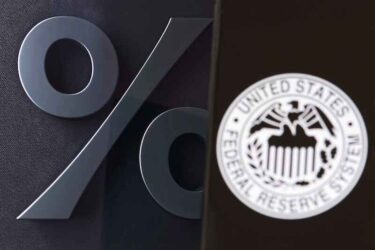Sometimes a Rate Cut Is Just a Rate Cut
Robert Ross|September 30, 2024

You may not like this essay.
But stick with me as it might save you thousands of dollars or more.
I know many market bears were hoping stocks would tank after the Fed announced a 50-basis-point rate cut.
I saw it firsthand in the comment section of one of my posts on social media:

Despite the positive market reaction, a handful of my followers assumed this was a “hawkish cut” rather than a “normalization cut.” That means the central bank is cutting because they see dark economic clouds on the horizon rather than simply reducing borrowing costs after an inflation surge.
And while there is some historical basis for the former argument, it is wrong for a few reasons.
50-Basis-Point Recency Bias
It’s true the Federal Reserve typically only brings out the bazooka 50-basis-point cuts when there is a recession on the horizon.
In 2001, the Fed cut rates by 50 basis points. What happened next? The dot-com bubble burst. Unemployment spiked, the S&P 500 crashed by 39%, and the economy took a nosedive.
Fast forward to 2007 – the Fed did it again. Fifty basis points off the top. And boom – within months, the Great Recession was underway. The market dropped more than 54%, unemployment soared, and the global financial system was on the brink.
So here we are… in 2024. The Fed just pulled out the same playbook – a 50-basis-point cut. Now, were history any guide, you might be thinking we’re headed for another recession.
You wouldn’t be alone. Jeffrey Gundlach, the guy who manages more than $90 billion at DoubleLine, says this is it. This is the beginning of the next big downturn.

Jamie Dimon – CEO of JPMorgan Chase – also recently said he thinks the U.S. is nearing a recession.
And while I hate to say the most dangerous words in investing, I’m going to…
They’re wrong and this time is different.
Think About It
First off, when the Fed cuts rates in the absence of a full-blown recession, the S&P 500 has risen in 19 out of 20 times over the next year.
Since 1971, the market is higher 100% of the time six months after the first rate cut, with an average gain of 13%. Those are solid odds if you ask me.
And when the Fed cuts rates within 2% of all-time highs – like they did at the last FOMC – the S&P 500 is higher a year later 100% of the time with an average gain of 13.9%…

But here’s the real question…
Are we heading into a recession right now? The yield curve un-inverted – a classic recession signal – but here’s the kicker: the S&P 500 has risen by an average of 11% in the year following the last eight yield curve inversions.
That’s not exactly the sign of an economy falling off a cliff.

Then there’s the Sahm Rule, which says if unemployment rises by half a percentage point or more, you’re in a recession. Sure, it recently triggered, but even Claudia Sahm herself, who created the rule, says it might not be as reliable this time around thanks to COVID-era labor market effects.
But most damning to the bearish thesis is credit markets aren’t showing the usual signs of stress. Look at the spread between junk bonds and U.S. Treasurys in the chart below. In a typical recession, junk bonds start looking riskier, and investors demand much higher interest rates to compensate for that risk. But that’s not happening. The spread is still small. Investors aren’t panicking yet.

Plus, inflation is cooling, the Atlanta Fed is projecting 3% GDP growth, and the labor market is still chugging along. This doesn’t scream “recession,” does it? In fact, if you ask me, we’re still in the recovery phase of the cycle… and the real boom is just around the corner.
Nobody Knows for Sure
There are no guarantees in investing.
It’s all about probabilities, not certainties. But right now, the data doesn’t support the idea that we’re teetering on the edge of a recession. If anything, these interest rate cuts are about to throw gasoline on the fire of what could be a major bull market.
The market’s reaction to the rate cut adds credence to this idea. Clearly, investors are optimistic about the outlook as Thursday morning saw the S&P 500 up 1.7% premarket. That was the 2nd highest opening at all-time highs ever, only exceeded on November 9, 2020, after Pfizer released positive data on its COVID-19 vaccine.
Credit markets, price action, and history are on the side of the bulls. That’s why we’ve been adding high-risk, high-reward positions to the Breakout Fortunes portfolio for weeks.



